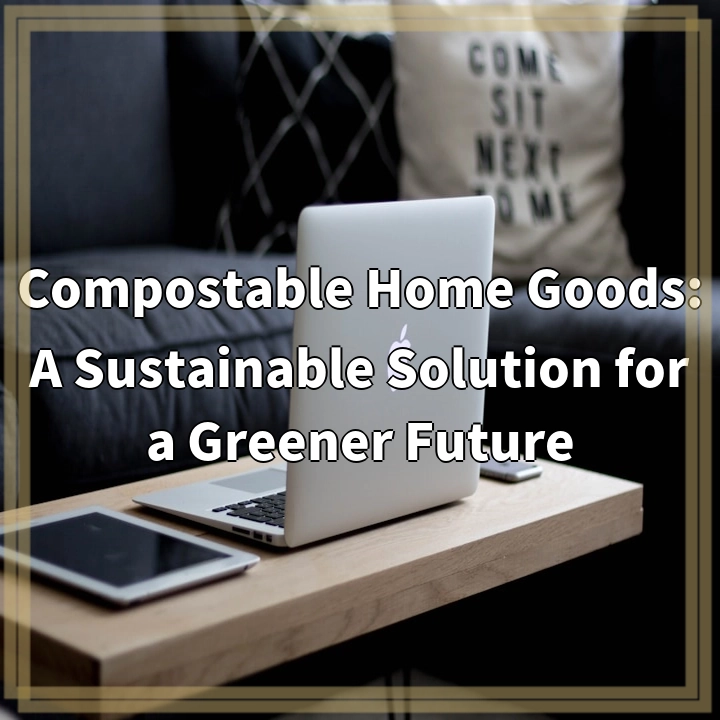
What are Compostable Home Goods?
Compostable home goods are products that are designed to break down naturally and return to the earth, leaving behind nutrient-rich soil. These goods are created using organic materials such as plant fibers, wood, and other biodegradable substances. Unlike traditional plastic or synthetic materials, compostable home goods have a minimal impact on the environment and reduce waste.
Real-World Problems Associated with Compostable Home Goods
1. Lack of Awareness and Availability
One significant challenge in promoting the use of compostable home goods is the lack of awareness among consumers. Many people are still unfamiliar with the concept of compostable products and may not even realize they exist as an alternative to traditional, non-biodegradable options. Additionally, the availability of compostable home goods in mainstream stores is limited, making it less accessible to the general public.
2. Proper Disposal and Infrastructure
While compostable home goods are designed to break down naturally, they require specific conditions for this process to occur effectively. Composting facilities and infrastructure play a critical role in providing the right environment for these goods to decompose. However, many areas lack the necessary composting facilities, making it difficult for individuals to dispose of their compostable products properly.
3. Contamination and Recycling Challenges
To ensure the success of composting, it is crucial to separate compostable materials from other waste streams. Unfortunately, the lack of awareness and clear labeling about compostable products can lead to contamination issues. If compostable goods end up in recycling bins or vice versa, it can hinder the recycling process and create challenges for waste management facilities.
4. Cost and Market Demand
Compostable home goods, currently, can be more expensive than their non-biodegradable counterparts. Higher production costs, limited demand, and economies of scale affect the price of these products. While market demand for sustainable alternatives is growing, making compostable home goods more affordable and accessible for all consumers remains a challenge.
5. Education and Behavior Change
Changing consumer behaviors and habits is a crucial aspect of adopting compostable home goods. By educating individuals about the environmental benefits and advantages of compostable products, it can help shift consumer preferences towards more sustainable options. Encouraging behavior change, such as proper disposal and composting practices, can create a more significant impact on reducing waste and promoting a greener future.

Solutions for Compostable Home Goods
1. Increasing Awareness and Availability
To address the lack of awareness, it is essential to educate consumers about compostable home goods and their benefits. This can be achieved through marketing campaigns, informative blog posts, and partnerships with retailers to increase the availability and visibility of these products on store shelves.
2. Developing Composting Infrastructure
Investing in composting facilities and infrastructure is key to promoting the proper disposal of compostable home goods. Governments, businesses, and communities can work together to enhance composting capabilities, expand collection systems, and establish partnerships with local composting facilities.
3. Clear Labeling and Education
Proper labeling of compostable home goods is crucial to prevent contamination and improve recycling efforts. Regulatory agencies can establish clear guidelines for labeling compostable products, and manufacturers can prominently display compostable logos or certifications on their packaging. Additionally, educational campaigns can inform consumers about the importance of correctly disposing of compostable items.
4. R&D and Cost Reduction
Investing in research and development can help find innovative solutions to reduce the production costs of compostable home goods. This includes exploring new manufacturing processes, materials, and technologies to make these products more affordable and competitive in the market. Government incentives and industry collaboration can support these efforts.
5. Promoting Sustainable Consumer Behavior
Encouraging sustainable consumer behavior is crucial in promoting compostable home goods. This can be achieved through educational initiatives, workshops, and campaigns that highlight the environmental benefits of compostable products. Additionally, providing information about proper disposal and composting techniques can empower individuals to make more eco-friendly choices.















